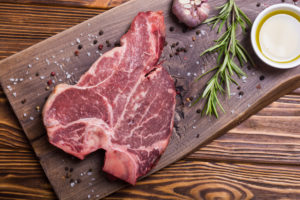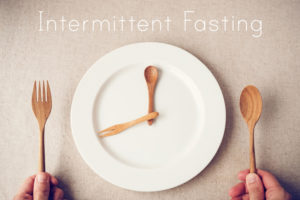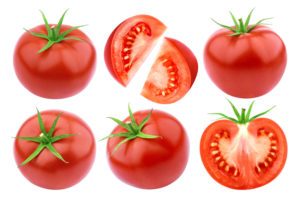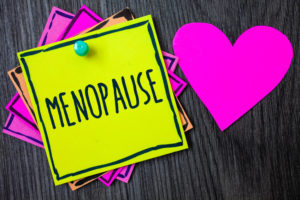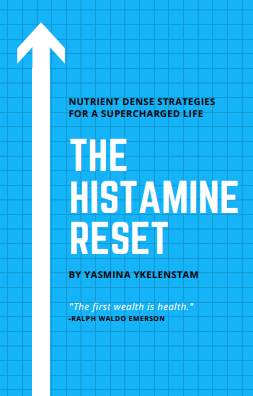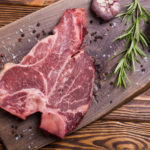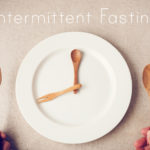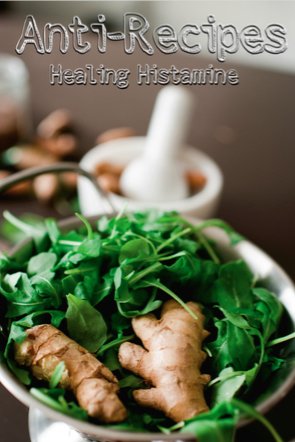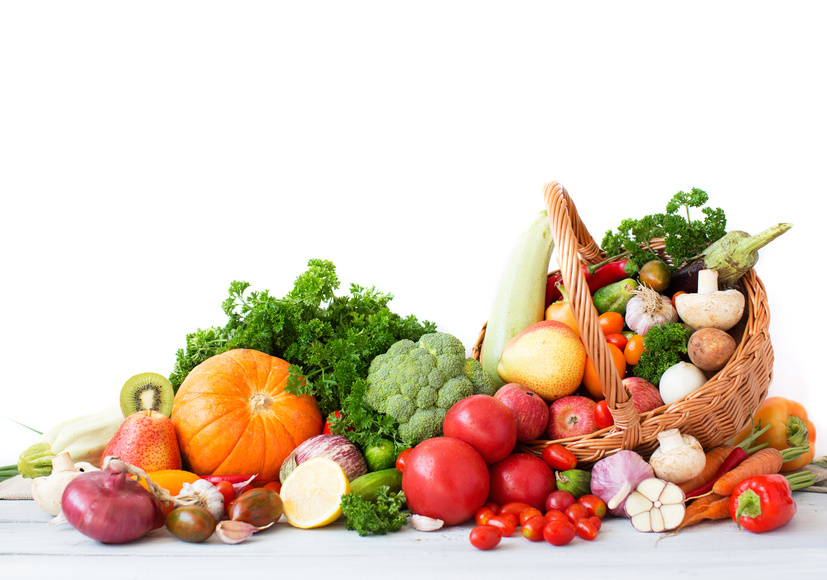
You may have heard of the histamine bucket: the idea there’s only so much histamine we can put into the body before we spill over into symptoms. I favour the inflammation bucket model, where we work out what inflammation-causing foods and lifestyle issues (stress, lack of exercise, low histamine foods that cause inflammation) are making us spill over. New research appears to confirm this by revealing that those with histamine issues are often dealing with concurrent inflammatory issues. References always at the bottom of post.
The inflammation bucket model is not one I came up with but it’s certainly one I’ve come to accept is the best working theory to explain what’s going on for many of us. While the traditional approach to healing histamine intolerance (or at least getting through it) has focused on limiting histamine containing foods, my method has been to prevent the inflammation bucket from filling up by using antihistamine and anti-inflammatory foods (even nutrient dense ones appearing on high histamine lists: mushrooms, chickpeas, lentils, radishes for example more on that here), stress relief and meditation (both of which have been proven to lower inflammation levels).
You can read more about the inflammation bucket here.
HISTAMINE IS ALSO FOUND IN THE BODY
All of this rests on the understanding that not only is histamine found in foods, but that it’s also found in mast cells in the body. Mast cells are an integral part of the immune system. These white blood cells are kind of an army barracks in which live inflammatory soldiers like histamine, prostaglandins, interleukins, leukotrienes and more. These are all healing agents in the fight against bacteria, viruses and more.
Histamine is the first responder.
It gets to the problem site, or somewhere we need healing, creating inflammation so the other inflammatory agents can penetrate and do their job.
In my original post a few years ago on the subject I explain that I believe that for many of us the big inflammation bucket is made up of little ones contained within it.
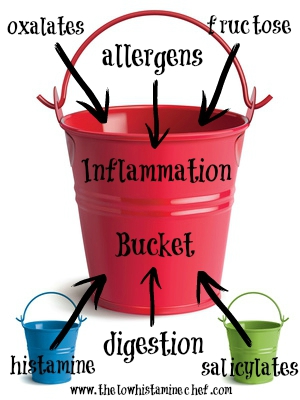
Rather than looking at this as separate issues, I had found that filling up just one of the little buckets contained within the big one was enough to make the whole thing spill over and cause symptoms.
And now it seems researchers are finding the same.
A study published in the Canadian Journal of Gastroenterology and Hepatology found significant overlap in the diagnosis of histamine intolerance, lactose, fructose and carbohydrate malabsorption in a sample of test subjects with unexplained gastrointestinal problems.

Now, a couple of things here. Histamine’s role in digestion means that having an excess of it can compromise the intestinal barrier. Yes, that means leaky gut. So it’s not surprising that histamine intolerance goes hand in hand with gut issues. Thankfully the bioflavonoid quercetin (which is in pretty much every food in my diet) has been shown to heal leaky gut.ELIMINATION RARELY BRINGS RELIEF
Not surprising at all to me given that I started out thinking I had a histamine intolerance, but when I eliminated those foods it suddenly seemed I was also reacting to salicylic acid foods. And once those were gone I was struggling with fructose foods and so on till I was down to a handful of foods.
That’s why I advocate making your own list of safe foods regardless of lists, and also prioritising certain nutrient dense foods when re-introducing foods. Learn how to do both here.
Research like this study really brings home that it’s important to look at the body as a whole and our food intolerance as more than just histamine related.
Though I started out hardcore low histamine for years, which no doubt starved my body of the nutrients it needed, most of all omega 3 (I now eat salmon a few times a week and take a vegan EPA/DHA supplement), I eventually realised that the goal wasn’t no symptoms at all, but rather very manageable ones.
For whatever reason my body is just highly sensitive and eating a well balanced diet rather than going gonzo with the elimination was instrumental to my healing.
It took years to add things back, a little at a time. Sometimes literally just a drop of something.
But addressing my stress, moving, walking away from a toxic relationship and reconnecting with meditation turned it all around. More on that here.
You’ll find recipes full of foods with antihistamine and anti-inflammatory properties my books Anti-Recipes and The Anti-Cookbook
CLICK HERE FOR A FOUR WEEK HISTAMINE RESET WITH MEAL PLANNERS, STRESS RELIEF STRATEGIES & MORE
——REFERENCES—–
Enko, Dietmar, Andreas Meinitzer, Harald Mangge, Gernot Kriegshäuser, Gabriele Halwachs-Baumann, Eva Z. Reininghaus, Susanne A. Bengesser, and Wolfgang J. Schnedl. “Concomitant Prevalence of Low Serum Diamine Oxidase Activity and Carbohydrate Malabsorption.” Canadian Journal of Gastroenterology and Hepatology2016 (2016): 1-4. Web.


